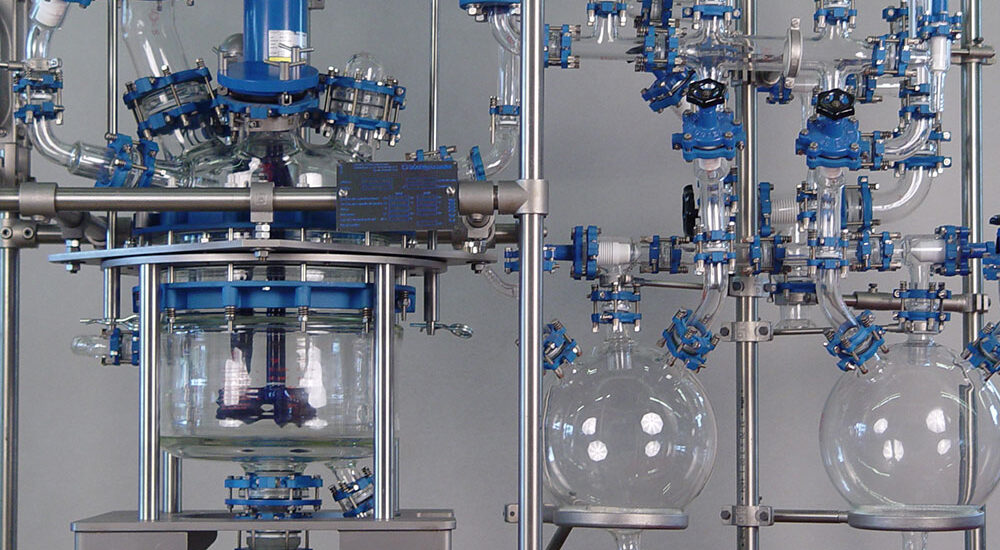Introduction:
The growth of the glass reactors market is fueled by their expanding applications in the chemical and pharmaceutical industries. The increasing need for reliable and efficient reaction vessels in areas such as chemicals, pharmaceuticals, and specialty chemicals is a key driver. Glass reactors emerge as an ideal solution for a diverse range of chemical processes, encompassing synthesis, crystallization, and purification.
The high demand for glass reactors is further propelled by the surge in research and development activities across various end-use industries. These reactors are favored for their flexibility, transparency, and the ease they offer in monitoring reactions. As industries continue to seek advanced solutions for their processes, the versatility and transparency of glass reactors make them a preferred choice, contributing to their growing prominence in the market.
In the dynamic realm of chemical processing, glass reactors stand as silent workhorses, offering a transparent view into the intricate world of reactions. As we delve into the opportunities, challenges, and future trends surrounding these essential tools, a clearer picture emerges of their pivotal role in shaping the future of chemical research and manufacturing.
Request For Sample Report: Elevate Your Industry Intelligence with Actionable Insights
https://www.futuremarketinsights.com/reports/sample/rep-gb-13717
Opportunities in Glass Reactors:
1. Precision in Processes: Glass reactors provide an unparalleled advantage in achieving precision and control over chemical reactions. The transparent nature of the material allows researchers to monitor reactions in real-time, enabling adjustments for optimal results.
2. Versatility Unleashed: From pharmaceuticals to petrochemicals, the adaptability of glass reactors spans across diverse industries. This versatility opens doors for innovation and the exploration of new applications, making them indispensable in various scientific endeavors.
3. Sustainable Solutions: With an increasing focus on sustainable practices, glass reactors contribute to eco-friendly processes. The inert nature of glass minimizes the risk of contamination, ensuring cleaner and more sustainable reactions in the long run.
Challenges to Navigate:
1. Fragility Concerns: While the transparency of glass reactors is a boon, their fragility poses a challenge. Careful handling and maintenance are crucial to prevent breakages, emphasizing the need for continuous improvement in design and material strength.
2. Scaling Up Dilemmas: Transitioning from lab-scale to industrial-scale operations can be a hurdle. Designing glass reactors that seamlessly scale up while maintaining efficiency and safety is a challenge that requires ongoing research and innovation.
3. Cost Considerations: The initial cost of glass reactors may be a deterrent for some, requiring a careful analysis of long-term benefits. Balancing cost-effectiveness with performance remains a challenge for both researchers and manufacturers.
Future Trends Shaping the Landscape:
1. Advanced Materials and Designs: Innovation in materials, such as strengthened glass and novel designs, is on the horizon. These advancements aim to address fragility concerns and enhance the overall durability of glass reactors.
2. Smart Integration: The integration of smart technologies, such as IoT sensors and automation, is poised to revolutionize glass reactor operations. This move towards intelligent systems enhances efficiency, data accuracy, and safety in chemical processes.
3. Collaborative Research Initiatives: The future sees increased collaboration between researchers, manufacturers, and end-users. Shared knowledge and experiences will drive the development of tailored solutions, fostering a collective effort to overcome challenges and unlock new possibilities.
In conclusion, as we stand at the crossroads of challenges and opportunities, glass reactors continue to be at the forefront of innovation in the chemical industry. Navigating these dynamics requires a concerted effort from all stakeholders, with an unwavering commitment to pushing the boundaries of what is possible in the fascinating world of glass reactor technology.
In 2022, the global glass reactor market displayed robust growth, reaching a noteworthy size of US$ 863.8 million. Looking ahead, the forecast period anticipates a continuous surge in global demand, with a projected Compound Annual Growth Rate (CAGR) of 6.5%. The market’s total value is expected to experience substantial expansion, climbing from US$ 913.1 million in 2023 to an impressive US$ 1,721.3 million by 2033. This trajectory signifies a promising and dynamic landscape for the global glass reactor industry over the coming years
About Future Market Insights (FMI)
Future Market Insights, Inc. (ESOMAR certified, recipient of the Stevie Award, and a member of the Greater New York Chamber of Commerce) offers profound insights into the driving factors that are boosting demand in the market. FMI is the leading global provider of market intelligence, advisory services, consulting, and events for the Packaging, Food and Beverage, Consumer Technology, Healthcare, Industrial, and Chemicals markets. With a vast team of over 5,000 analysts worldwide, FMI provides global, regional, and local expertise on diverse domains and industry trends across more than 110 countries.
Contact Us:
Future Market Insights Inc.
Christiana Corporate, 200 Continental Drive,
Suite 401, Newark, Delaware – 19713, USA
T: +1-845-579-5705
For Sales Enquiries: sales@futuremarketinsights.com
Website: https://www.futuremarketinsights.com
LinkedIn| Twitter| Blogs | YouTube

